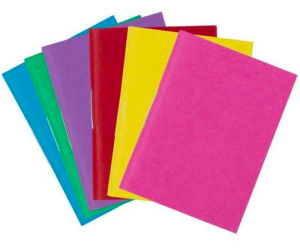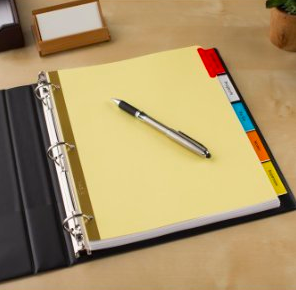Note Taking Hacks for Study Success
Taking notes is not only expected by your teachers, it is essential for study success as it makes life so much easier. Before we start on ideas to make note taking and studying effective, it is important to understand the role of note taking in the learning process.
Taking notes in class is not about pleasing the teacher, although many times it seems this way. Notes are an important memory tool to help trigger the content and learning during your study and revising time. It helps your brain process the information for later recall. One of the major keys to passing exams is that an exam is a memory test. You are being examined on what you can recall and remember from class and your study. The act of writing can trigger learning in the brain at a deeper level. Even if you are using a laptop, phone or tablet for your note taking, research shows handwriting is still a more effective strategy for recall of your notes. If you are typing your notes, these hacks below still apply.
Write notes in your own words
It is often not important to write the notes exactly as the teacher has, rather to write what makes sense to you, so you can understand it later. Of course, make sure you record the technical language correctly and copy diagrams exactly. If the teacher uses a new word, that you are not sure about, write the definition of the word beside it as a memory prompt later.
Use short hand
You do not have to spell all the words correctly when taking notes – remember the purpose is to be able to use the notes for further revision later. I often miss out small insignificant words or shorten long words. For example, when I was learning about forming good habits from Robin Sharma he uses a phrase that says; “Change is difficult at the start, messy in the middle and gorgeous at the end.” That is too many words to write quickly, especially when the person is continuing to talk. In my notes I wrote:
Change – Start hard middle messy end gorgeous. I have taken Robins 15 words and reduced it to seven. No punctuation, just the key words. Later when I am reviewing my notes, I might add the extra words or simply remember the whole quote. Also learn how to shorten long words. For example, the word ‘understanding’ is long so I might write ‘understg’ with the small ‘g’ indicating -ing. If your short hand makes sense to you that is what is important. You are taking the notes for you.
Draw Pictures & Diagrams and Create Symbols
“A picture is worth a thousand words.” This is very true in note taking. If you can draw the ideas, concepts and processes they are often easier to recall. Even if you can’t draw! Also use colour to stimulate the brain. Creating a bank of symbols can make note taking faster. I use a triangle to write ‘change’ and exclamation mark ! to show something is important and a key to highlight a key concept.
Write more than the teacher has on the screen or board
Often a teacher adds key ideas verbally, ensure you write that down. Add ideas and thoughts or examples to your notes. It is useful to divide your page for this. Draw a column on the right hand side of your page, maybe one quarter to one third of the page. Use this to add extra explanations, your personal thoughts, questions or ideas you would like to explore later.
Don’t ask “Do I need to write this down?”
If the teachers mentions something interesting and doesn’t ask you to write it down, it still could be relevant. The teachers’ job is to give you the content so you can learn it, apply it to solve problems, or answer questions in a test. As a teacher, I am always adding life advice, fun facts or extra interesting content which may help my students. If it sounds interesting or relevant, jot it down.
Avoid Rewriting
Rewriting and copying your notes is a total waste of time. It is boring for the brain and you will end up thinking of other things while you are copying and not engaging with the information. Instead summarise your notes.

Summarise your notes
Revisiting your notes within 24 hours is a major key to recalling, remembering and learning the content your teachers give you. A great hack for this takes twenty minutes each day (and we can all find 20 minutes a day) and is easy to do. It is called the ‘Notebook Method.’ Simply purchase a small notebook for each of your subjects and label the cover: English, Maths, Science etc. At the end of each learning day, summarise your notes into the notebook. Ensure this is a summary, not everything. The idea here is to record the key ideas, the new words, the concepts that you will need to know to pass your exams. The next day, ideally in the morning, spend 2-3 minutes rereading your previous days summaries.
Take photos
Many students take photos of my slides when I am teaching, however when I ask them if they go back and look at their photos, most say they don’t. If you want to take photos of the teachers notes, or photos of their slides ensure you actively engage with the information by adding the photos to your notes and annotating or recording ideas and examples on or beside the photos. On a laptop or tablet, drop the photos into your notes document and type the additional information, examples and ideas beside the photos.
If the teacher gives you the printed notes
Actively engage with these notes by highlighting key ideas, adding symbols and making them colourful. Handwrite examples, add your thoughts and opinions. Remember to summarise these notes into your notebook at the end of the day.
Explain your notes to someone else
When you teach something, you actually learn it at a deeper level as your brain needs to make sense of the content to be able to explain it. Go through your notes with a study buddy, a parent or a tutor to enhance your understanding of the information.
Organisation & storage of your notes
It continually astounds me how many students do not carry spare paper with them, and I see so many students writing notes on crumpled scraps of paper that will be lost in their bag later. If you are handwriting, folders are a great idea. Use dividers to keep each subject separated. Within each subject, create divider for 5 categories: Notes, homework, handouts, tests/quizzes, blank paper.
If you are taking notes on a laptop or tablet, you can create similar folders. Take 20 seconds at the end of each class to ensure your notes are in the correct place. This will save you many frustrating minutes looking for your notes later in the day or week.
Study Smart & Pass 🙂
Want more Study Tips and Hacks? Please click here
Tags: Karen Boyes, Karen Tui Boyes, note taking, Study Smart
Published on Wednesday, January 29th, 2020, under Study Skills
